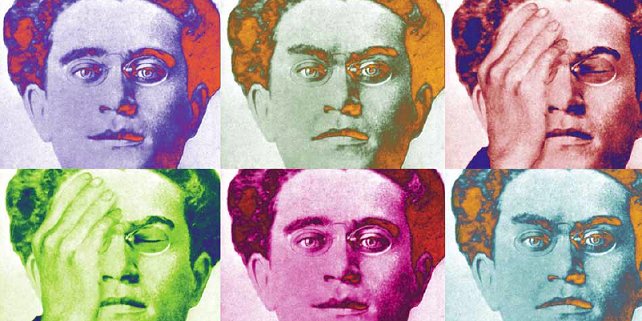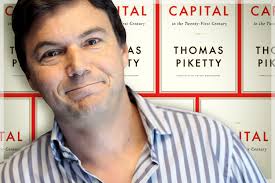Passive Revolution, Permanent Revolution and Hegemony
27/03/2015

Passive Revolution, Permanent Revolution and Hegemony
By Fernando Rosso y Juan Dal Maso
Ideas de Izquierda N° 13, September 2014
It is a recurrent commonplace from most Gramscian intellectuals (as well as some fuming anti-Gramscian intellectuals) to present Gramsci’s theorizations concerning the question of the passive revolution as the ‘objective foundation’ of a ‘hegemonic’ strategy which is in opposition to the permanent revolution. From this point of view, and owing to the capacity of capitalism to create mechanisms to recompose itself, it is necessary to employ a political struggle of an accumulative nature, whose strategic definitions, at best, do not go beyond the constitution of a ‘popular bloc’ which brings about a change in the relation of forces or, in the worst case, creates a range of variants that go from ‘broad left-wing parties’ (Europe) to ‘progressive governments’ (Latin America).
In Gramsci’s analysis the following questions are present “…does there exist an absolute identity between war of position and passive revolution? Or at least does there exist, or can there be conceived, an entire historical period, in which the two concepts must be considered identical, until the point at which the war of position once again becomes a war of manoeuvre?” (C15 §11). Taking into consideration the context of the reflection given by the Italian communist, one can claim without fear of forcing the argument that this question points towards a justification of the war of position by a correlation of forces rather than the adoption of the passive revolution as an actual policy.
The ‘strong antithesis’, the tendencies to the extreme and the passive revolution as ‘moderator’
As Peter D. Thomas is right to point out, in the Prison Notebooks the passive revolution emerges as an expression of middle-class society’s ‘organic crisis’ and like an antithesis or failure of the active revolution of the popular classes.
It is precisely in this pattern of the ‘strong antithesis’ that Peter D. Thomas rescues from C15 § 62, where the key lies to thinking about the relationship between passive revolution and permanent revolution as inherently opposed dynamics to the development of the class struggle inside middle class society. And 1848 is Gramsci’s reference point year for reflecting on the relationship between passive revolution, permanent revolution and hegemony. The moment in which this ‘strong antithesis’ of the two tendencies is put into sharp relief: On the one hand, the proletariat imposes the bourgeois republic surrounded by social institutions and struggles to go further, on the other hand the bourgeoisie provokes the proletariat into a fight in order to inflict a defeat, that would then open the path to Bonapartism and the subsequent ‘normalization’ of bourgeois society.
In Germany, by conducting the process in a more conservative way, the democratic party betrayed the workers, who didn’t confront the bourgeoisie in the same way as was done in France, even though in both cases the necessity arose for a strategy for the working class to be independent from the bourgeoisie. It is here where the first problem appears. Because without the ‘permanent revolution’ of 1848 and the following bourgeois counterrevolution, and then later, without the Commune of Paris, the next ‘passive revolutions’ would have been impossible.
Following the prevailing Gramscian idea of the integral State (or expanded) as a unit of dictatorship and hegemony, the passive revolution takes the place of the counterrevolution when the latter isn’t strictly necessary. That is to say that not every form of reaction from the bourgeoisie and its State reduces itself to the passive revolution when confronted by the class struggle (as of course Peter D. Thomas himself seemed to say).
In this framework, if the class struggle contains a clausewitzian ‘tendency to the extremes’, whose formula was expressed by Marx in his war cry, the declaration of the permanent revolution, the passive revolution presents itself as a ‘moderating’ mechanism between revolution and counterrevolution.
From one century to another: revolution from above and restoration-revolution
Taking up the distinction that A. Morton establishes between the two meanings of the passive revolution (as ‘revolution from above’ made by the national State with conservative methods and as ‘restoration-revolution’ that takes the demands from below and integrates them into a new policy that expropriates them but doesn’t resolve them), in the XIXth century, the ‘passive revolutions’ had a ‘dual nature’, since they accomplished historically progressive tasks, but with conservative methods.
The struggle between the bourgeoisie and old society having come to an end, the passive revolution is characterized to ensure the duration or survival of a social regime that historically becomes conservative. And in this context, aspects of ‘revolution from above’ that the passive revolutions in the XIXth century had, tend to clear on the basis of aspects more strictly ‘restorative’. In this framework, Gramsci’s question about whether fascism could constitute any type of passive revolution in C10 §9, while it shows a tendency to the generalization of the mechanism to which we make references in other articles, also defines a limit in the understanding of the ‘passive revolution’ as something ‘progressive’.
With the ending of the possibility for historical change occurring without the ‘democratic’ struggle being transformed into a social struggle and without this representing any ‘progress’ (characteristic feature of the passive revolutions of the XIXth century), what remains from the passive revolution in the XXth century (and the current one) is a mechanism of expropriation of popular demands through the means of partial ‘rehabilitations’, ‘modernizations’ and ‘renovations’, that pave the way for more right-wing restorations on the whole.
In this context, we have to remark that the character of ‘moderator’ that was attributed to the passive revolution during the XIXth century dissipates during the XXth century, with any glimmer of ‘progressiveness’ or contradictory relationships between ‘progress and conservatism’ completely fading away. The passive revolution relies upon the results previously obtained by the counterrevolution or paves the way so that this counterrevolution happens in better conditions. According to the profundity of the counterrevolution or the crisis previous to it, the re-compositions are closer to ‘revolutions-restorations’ or to a ‘passivizing-restorations’.
In this context, the ‘recomposition’ of states in the post-war period in Western Europe are unconceivable, without the Second World War and the role of Stalinism, first as a degeneration of the leadership of the October Revolution and then, of the Third International; up to the ‘international institutionalization’ that gave birth to what became known as ‘Yalta’s world’.
Stalinism fulfilled a counterrevolutionary role on an international scale, endeavouring to abort revolutions that were out of its control or carrying out ‘expropriations from above’ in the territories that remained under its control after the Second World War (reproducing the mechanism of passive revolution) and thus provided a guarantee for the stability of western democracy’s during the second post-war period.
And although it displeases many, the ‘passive revolution’ ends up being a confirmation of the permanent revolution theory: the national, popular and democratic struggles that do not evolve towards a struggle against capitalism and in favour of working class power, end up being diverted, held back, aborted and submitted to restorations aimed at building a very similar rule to the former one, or worse (Egypt). In short, the ‘passive revolution’ becomes one of the main preventive mechanisms for blocking the permanent dynamic of the revolution.
For that reason, the abstract opposition between hegemony and permanent revolution ends up in a kind of form of vindication of the passive revolution as a plan and as a strategy.
Past and present of the permanency of the movement
Having thus discussed along general lines the relationship between passive revolution and permanent revolution; we will try to think over the relations between hegemony and permanent revolution nowadays. For that purpose we’ll take the article ‘To a theory of hegemony’ by Fabio Frosini , which contrarily to other Gramscian positions, tends to establish a relation of continuity between the permanent revolution and hegemony.
Frosini quotes the C1 §44, in which Gramsci points out: Concerning the Jacobin ‘slogan’ launched by Marx to Germany in 1848-49, one must observe its complex success. Retaken, systematized, elaborated, intellectualized by the Parvus-Bronstein group, it revealed itself to be inert and inefficient in 1905 and thereafter: it was an abstract thing of scientific committees. The current which opposed it in its intellectualized manifestation, on the contrary without using it ‘deliberately’, in fact, in its historical way, real, living, adapted to time and place, like coming out of every pore of the society that it had to transform, of alliance between two classes with hegemony of the urban class.
It is, to say the least, strange that the idea of an ‘abstract’ theory that reveals itself as ‘inert and inefficient’ could in reality be used in an “historical, real, living, adapted to the time and place” way, or better said, it seems like a false opposition between realpolitik and theory. But even with this objection, it is interesting how Gramsci himself, in his opposition to Trotsky’s theory of permanent revolution as a theory, recognizes – outlining that it was in fact brought ahead by the Bolsheviks – that this theory posed with general and correct lines how the Russian Revolution was going to develop, so much so that in the event Lenin and Trotsky coalesced in the policy of ‘alliance between two classes with hegemony of the urban class’, indeed, after that, Kamenev and Stalin in the absence of Lenin supported the provisional government between February and April (a question corrected by Lenin in the ‘April Thesis’).
However, it is necessary to clarify that Gramsci mixes-up the theory of the permanent revolution as it is explained in Results and Perspectives – which was a theory specially made for Russia – with the ‘mature’ version based on the generalization of the strategic lessons of the experiences of the communist movement in the 1920’s, especially around the Chinese revolution of 1925-1927, and from which Trotsky generalised the theory (while Gramsci limited himself, concerning China, to the policy of the national pan-China Assembly without hegemony of the working class).
In this context, if Karl Korsch’s judgement that Marxism has to be understood as a theory of revolution, we can consider the theory of the permanent revolution as the highest moment in the development of Marxist theory in the 20th century, mainly because of the change of the theoretical framework this implies, in relation to the conceptions of the ‘Marxism of the 19th Century’, that had survived until the 20’s (mainly the idea according to which the proletarian revolution only corresponded to the ‘advanced’ countries).
However, in order to get out of the sterile opposition between ‘hegemony’ and ‘permanent revolution’, Frosini tries to relate them, without changing Gramsci’s point of view at all, but by adding a variation:
According to Gramsci there is a strong nexus between the slogan launched by Marx, Jacobinism in its historical efficiency and the hegemonic organisation corresponding to the modern State (Hegelian!), that is, the hegemony of the productive urban classes upon the peasantry. In short: the only way to use the permanent revolution nowadays – unlike Parvus and Trotsky, who reduced it to a ‘theory’ (they ‘systematized’ it) – is to view it historically and politically, as a structure of the hegemony; but also the other way round: the only way to view the hegemony at Marx’s level (without letting it fall into a ‘passive’ composition of Hegelian type, or letting it derive to an empty ‘republicanism’ and ultimately rhetorical, of Jacobin-radical type) is to graft it onto the revolution in permanence.
The implicit definition of his thinking that we wish to rescue would be more or less the following: “opposing hegemony to the permanent revolution has as a result the defence somehow of the passive revolution as a program”.
Forsini presents it this way: “...the difference between the ‘passive’ composition of the conflicts and its evolution ‘in permanence’ marks the difference between bourgeois and proletarian hegemony...” And, at the end of his article, he maintains:
Understood this way, the proletarian hegemony is the “current form of the forty eight doctrine of the ’permanent revolution’”, meaning that it keeps the demand of the permanence, once that the civil Hegelian society would have been rethought not only as ‘system of needs’, but as part of the State, rather than that place in which the political battle would be definitively won or lost.
In this context, to consider the conditions of the permanent revolution in our time, we have to reflect on the relations between:
– ‘Marx’s formula’ focused on the need of an independent position of the working class facing the middle-class fractions that tried to limit the radicalism of the 1848 revolutions;
– ‘Gramsci’s formula’ about hegemony (always fighting the relative shift that this achieves from the working class’s centrality to a species of ‘popular-national bloc’) that emphasizes the necessity for the working class to conquer the ‘intellectual and moral’ control of the ‘subaltern’ classes (socially oppressed and without proper political representation) in societies where the State is presented as an ‘integral’ state (or expanded state) co-opting the working class organizations as a base of the bourgeois order, and;
– ‘Trotsky’s formula’ that brings the ‘permanency of the movement’ to a whole new level of theoretical generalization, in conformity with historical experience: from democratic-middle class to socialist, from national to international, and as permanent revolution inside post-revolutionary society.
Although ‘Trotsky’s formula’ contains the two former ones and not the other way round, what’s for sure is that to be able to state such a thing one needs to explain precisely in what sense it contains them.
If we try to consider the current dynamic of the permanent revolution, we can say that contrary to the post-war period in which that dynamic became blocked and the revolution moved away to the periphery while there was stability in the central countries, in the upturn of 68 to 81 it tended to gather again in the metropolis and the periphery, converting into downturn during the ‘middle-class restoration’ of neoliberalism; nowadays a more ‘all embracing’ dynamic is being generated again in which we could see themselves processes in the distinct continents without any one having the exclusivity neither of the crisis or the revolutions, nor the stability.
For these reasons, Trotsky’s theory of permanent revolution is in great shape. However, during interventions the working class is still like an actor inside heterogeneous popular movements without ever obtaining power. ‘Marx’s formula’ still prevails, or better said, the permanentist program means in first place to conquer an independent position of the working class so as to progress in the recognition of itself as a subject and at the same time the necessity of hegemonizing other oppressed sectors.
At the time, both Trotsky and Gramsci analysed the changes in the forms of the state during this inter-war period, agreeing on many aspects of the processes of ‘expansion’ of the State with the goal of containing or subordinating tendencies of the class struggle and working class organizations .
To this we can add that the relative generalization of ‘western’ features (‘expanded’ State, based on the extension of the bourgeoisie democracy, the state control of the trade unions and the formation of the ‘public opinion’ through communication media) in most countries, makes Trotsky’s ‘formula of the permanent revolution’ tend to incorporate aspects of Gramsci’s ‘hegemonic formula’ that in turn warns that the enemy to face is a state device ‘based on something more’ than pure and simple domination, thus enriching the theory.
In that framework, the relation of complementarity between ‘passive revolution’ and ‘counterrevolution’ makes the formulation of hegemony, as an alternative strategy to permanent revolution, sterile since the only form in which the ‘hegemonic’ accumulation can transcend the mechanism of passive revolution (that looks for a constant appropriation of working and popular sector’s practices) is by bringing the ‘permanency of the movement’ further and above the limits imposed by those mechanisms, including the period of accumulative political struggle.
For that reason, the permanent revolution can be the ‘structure of hegemony’ only if the ‘permanence of the movement’ is conceived from a strategy that transcends the accumulative political struggle towards civil war and the takeover by the working class. That is to say that hegemony evolves into a moment of the permanent revolution, according to Gramsci it is, the moment in which the ‘war of position becomes a war of manoeuvre’.









